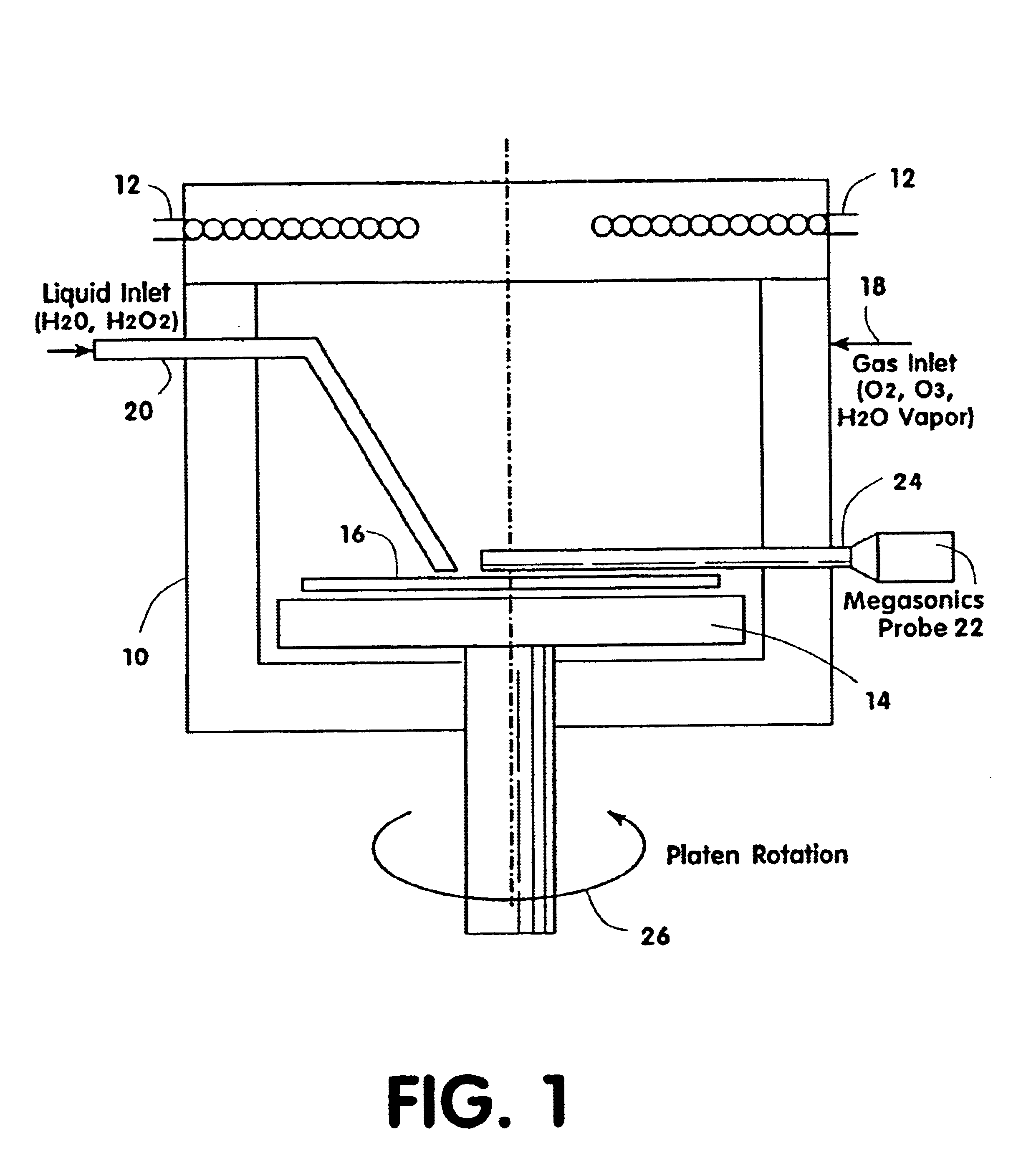Method and apparatus for removing photoresist and post-etch residue from semiconductor substrates by in-situ generation of oxidizing species
- Summary
- Abstract
- Description
- Claims
- Application Information
AI Technical Summary
Benefits of technology
Problems solved by technology
Method used
Image
Examples
Embodiment Construction
)
In describing the preferred embodiment of the present invention, reference will be made herein to FIGS. 1-10 of the drawings in which like numerals refer to like features of the invention.
The use of hydrogen peroxide supplemented by ultra-violet energy has been known in the art. Ultra-violet peroxide processes are used to rid water of low-level organic contaminants, and also to disinfect. Ultra-violet energy breaks down hydrogen peroxide into hydroxyl and peroxyl radicals, which are aggressive oxidizers. This breakdown may be represented as follows:
H2O2→2.OH
H2O2→O2H+H
The radicals oxidize the organic contaminants ultimately resulting in the formation of carbon dioxide and water. They are also effective at breaking carbon-carbon (C—C) bonds in polymers rendering them more digestible by other means.
The method disclosed herein generates radicals in-situ, thus generating them close to the semiconductor substrate. Referring to FIG. 1, a source of ultra-violet light 12 is assembled at the...
PUM
| Property | Measurement | Unit |
|---|---|---|
| Length | aaaaa | aaaaa |
| Length | aaaaa | aaaaa |
| Energy | aaaaa | aaaaa |
Abstract
Description
Claims
Application Information
 Login to View More
Login to View More - R&D
- Intellectual Property
- Life Sciences
- Materials
- Tech Scout
- Unparalleled Data Quality
- Higher Quality Content
- 60% Fewer Hallucinations
Browse by: Latest US Patents, China's latest patents, Technical Efficacy Thesaurus, Application Domain, Technology Topic, Popular Technical Reports.
© 2025 PatSnap. All rights reserved.Legal|Privacy policy|Modern Slavery Act Transparency Statement|Sitemap|About US| Contact US: help@patsnap.com



